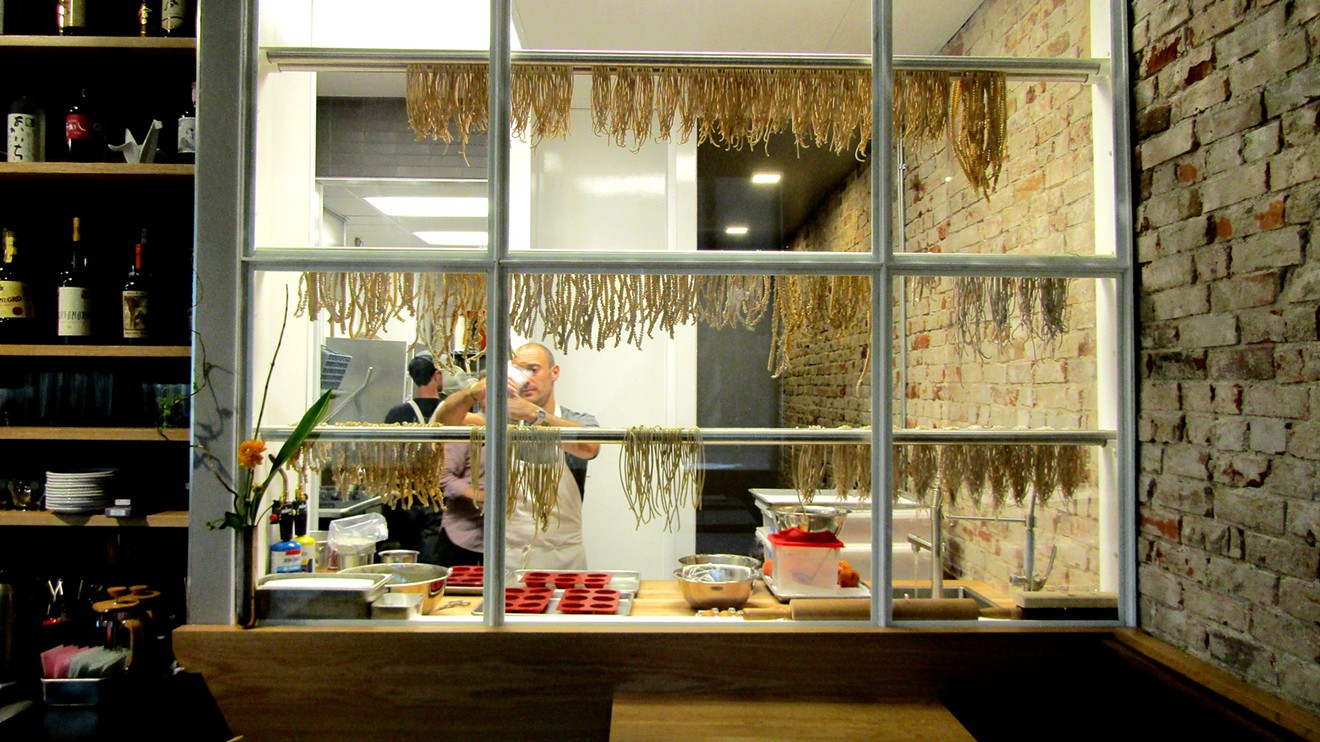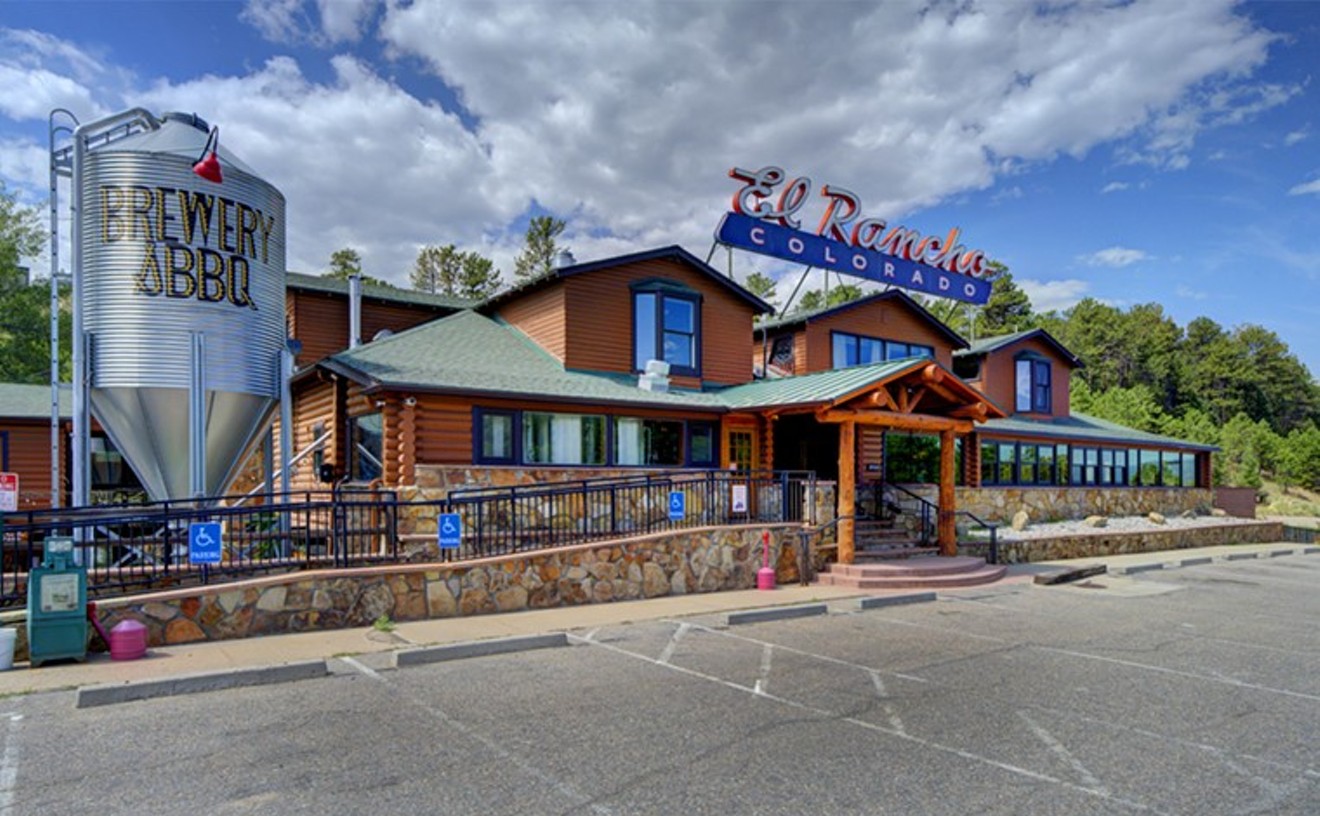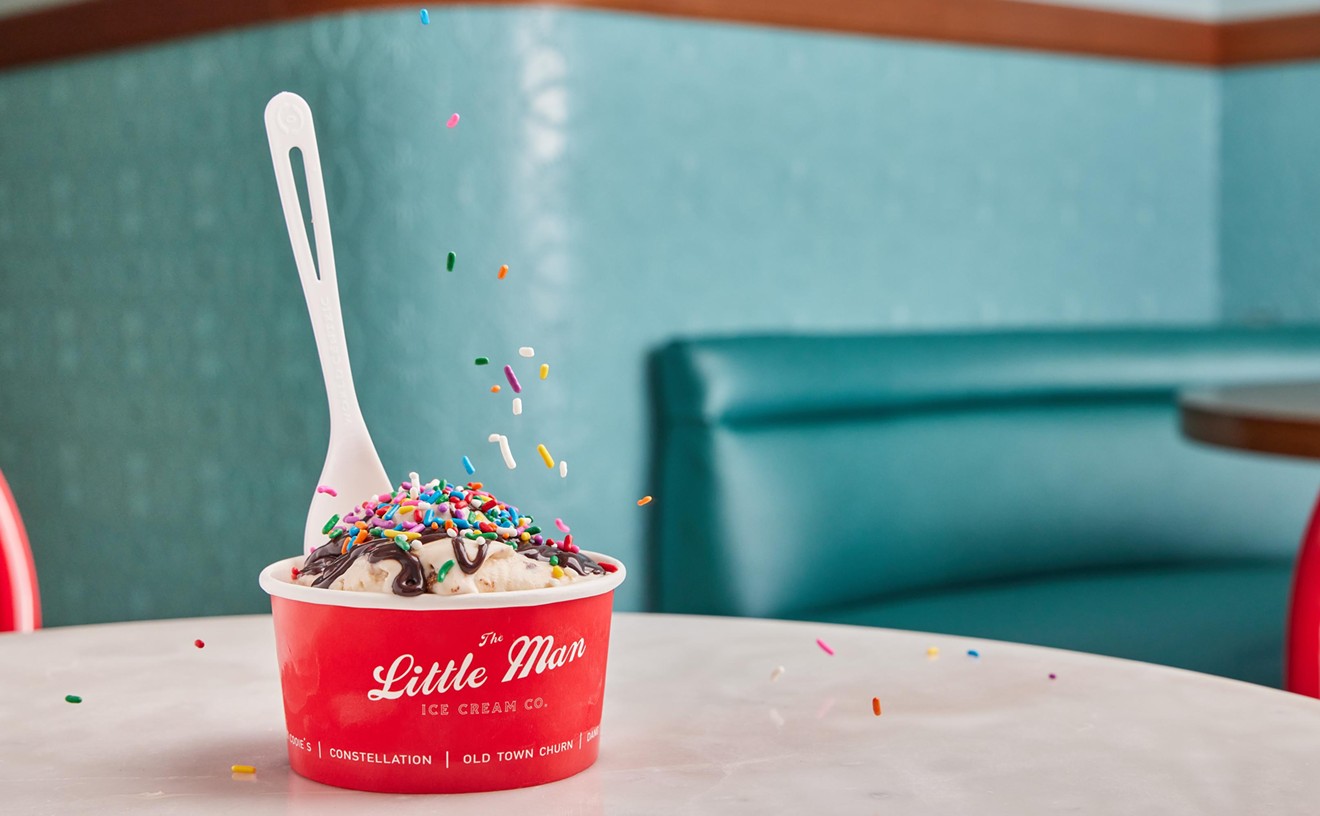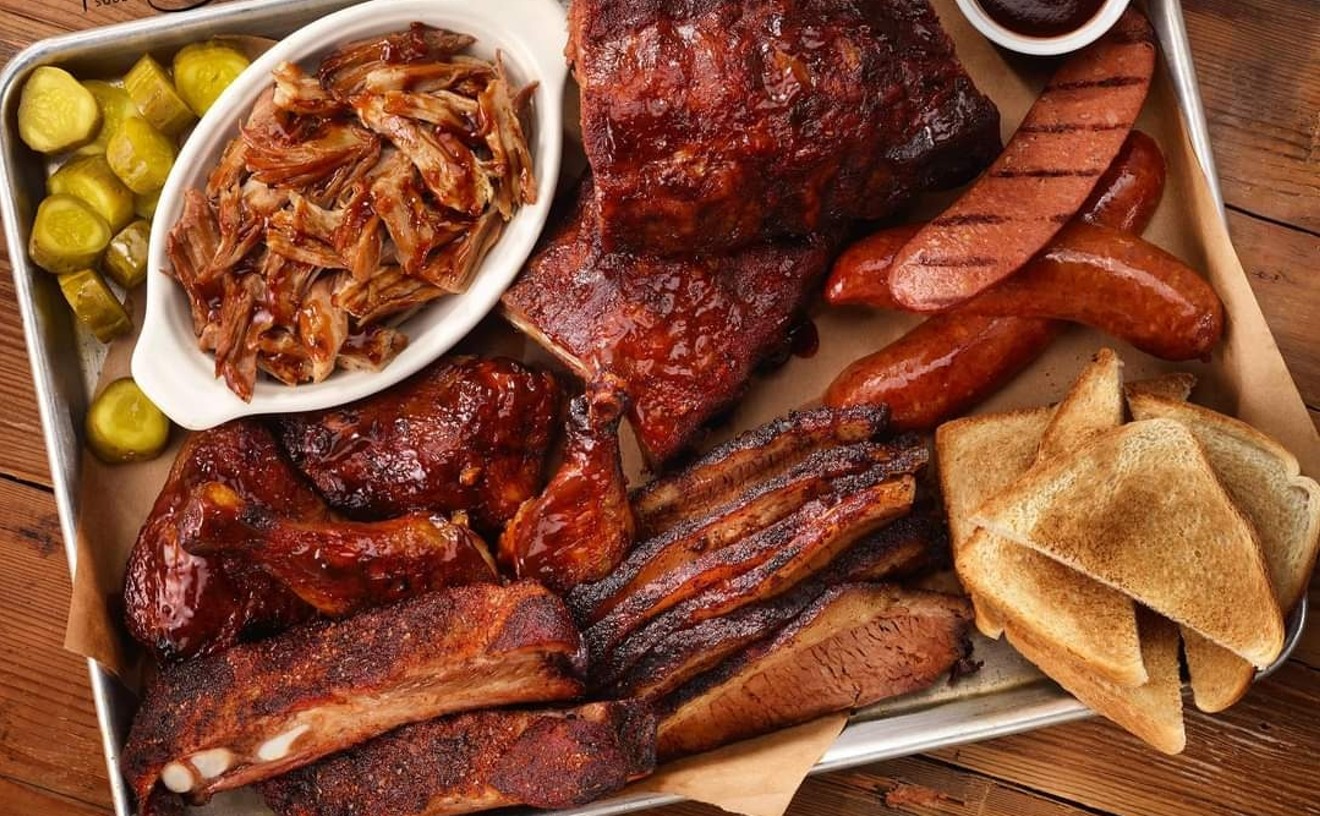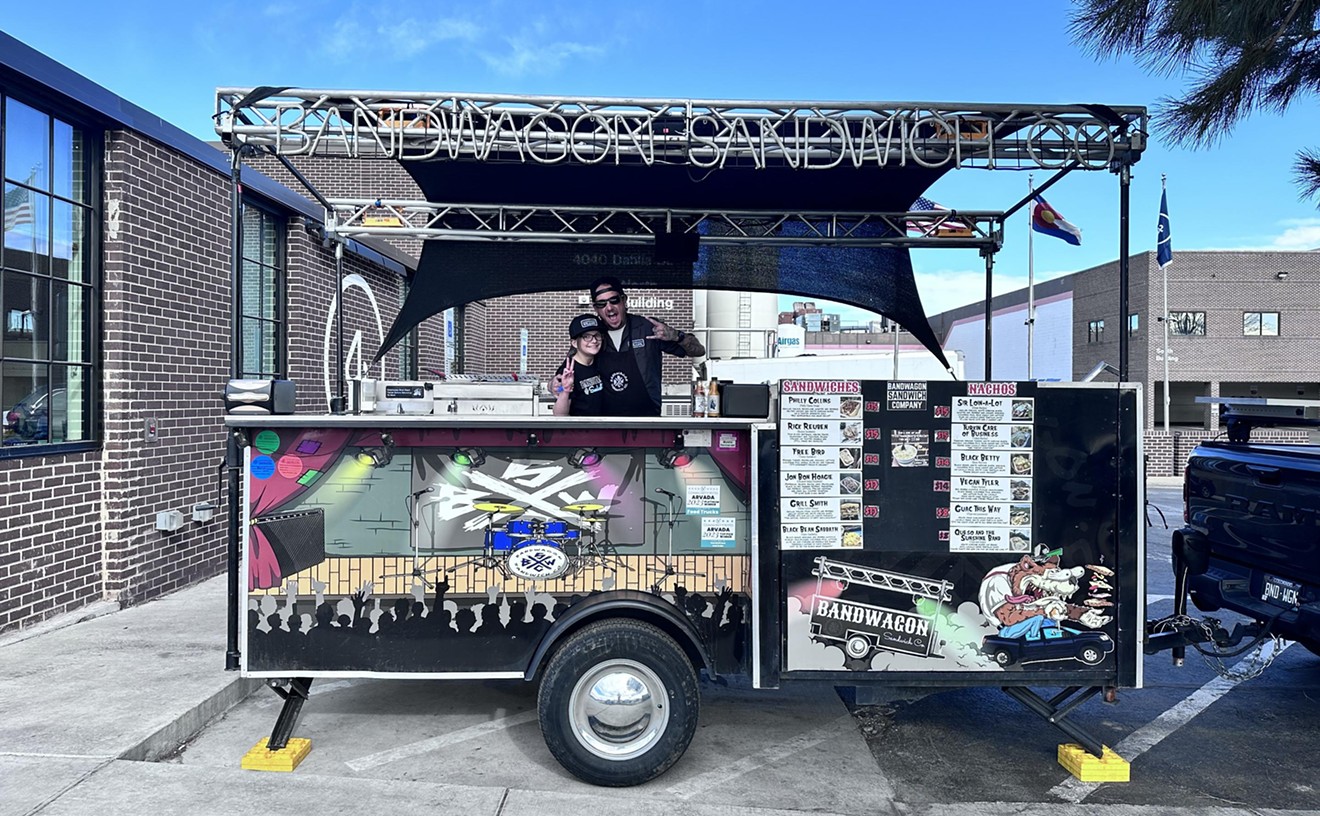Kelly Whitaker is worried about how to describe his new restaurant, the Wolf's Tailor, which opens to the public on Saturday, September 1, at 4058 Tejon Street.
I'm worried about it, too — mainly because capturing the barrage of ideas and innovation Whitaker is throwing into the project while giving potential diners a sense of what they'll be eating and how they'll construct a meal is a little overwhelming. This isn't small plates or fusion or any other easily definable "concept" that can be packaged and marketed and sold hot and fresh.
It's a revolution.
"We're scrapping the model," says Whitaker, who also owns Basta in Boulder and has been involved in several other successful launches around town, including Cart-Driver (which he exited in 2016) and Acreage, where he consulted on the design and operation of the kitchen and restaurant.
"We look at things like wage equality and food waste, and we start building the restaurant around that," he adds. "You just can't build restaurants the same way anymore. Everything is too expensive."
Whitaker's vision involves blending front- and back-of-house roles to give guests a unique experience and to provide better wages for every employee. In Colorado, tipped employees can be paid a lower minimum wage (currently $7.18 an hour, compared to $10.20 for non-tipped employees), but they often end up making more money than cooks and other staff because tips can't legally be pooled between the two wage groups. A recent change in the law allows restaurants to waive the tip credit, but it also means that all employees must be paid at least the higher minimum wage. The Wolf's Tailor will pay its staff well above that rate, but it will also share tips among all employees, not just servers.
Whitaker admits that the law could be misused, because unscrupulous restaurant owners could pocket some of the tips — but they probably wouldn't be able to retain employees very long doing that. His goal is to provide stability and a fair wage for everyone working at the restaurant. He'll have fewer employees than restaurants following a standard model, but cooks will run food and waitstaff will have culinary knowledge. So if you're wondering what exactly goes into that chawanmushi on the menu, the person who made the dish could easily be the one describing it to you tableside. And if you've eaten at Basta, especially at the chef's counter, you've seen the graceful dance of cooks as they rotate in the tight space from the wood-fired oven to the plating station to the counter. Just extend that notion to the entire operation.
This kind of service flow can't happen just anywhere. Whitaker has put a lot of thought into designing a restaurant space that will facilitate interaction between guests and staff. He just got back from the MAD Symposium (founded by René Redzepi of Noma) in Copenhagen, where he discovered that European chefs and restaurateurs are already transforming the dining experience to cope with the challenges of rising labor, food and real estate costs.
And he's brought on Donnie Criswell, owner of Denver Modern, a local furniture design company, not only to execute his vision, but to become a partner in the restaurant. Criswell took Whitaker's ideas and turned them into solid objects that affect the overall dining experience. All tables and bar tops, for example, are at 34 inches, four inches higher than the standard. Chairs and booth benches, then, are higher too. The result is that customers are brought closer to eye level with staff, rather than looking up at them like kids at the card table on Thanksgiving. (Those with shorter legs will find foot rests built into the chairs.)
Stools at the bar were inspired by a Twitter photo of Anthony Bourdain and Barack Obama eating dinner at a cafe in Vietnam. "Low plastic stools, cheap but delicious noodles, cold Hanoi beer," was how Bourdain captioned the 2016 photo. Whitaker saw the image as egalitarian and representative of his vision, and so shared the photo with Criswell, who came up with a wood-and-steel version with three legs, a contoured seat and a small handle. The stools line one counter facing into the kitchen, which opens into the dining room with counters at the same height as all the tables (so there are no high counters or bars to interrupt the flow).
Criswell also designed and built a row of booths that appear to be floating, when viewed from the right angle, with tables and benches cantilevered out from minimal support underneath. The trick was fabricating a steel support system hidden inside a low, wooden wall that runs the length of the row of booths. Whitaker says he was aiming for the feel of an American diner while still maintaining his overall "wabi-sabi" ethic, a Japanese design philosophy that favors natural, imperfect surfaces that change over time with age and use. The result is warm and soothing, with a subtle shift in the dining room paradigm that your subconscious picks up before your brain registers the actual differences.
Behind the overall architicture are Kevin Nguyen and Scott Lawrence, who also handled Call (recently named one of the ten best restaurants in America) and Hop Alley in RiNo.
The goal of zero waste was also incorporated into the design of the restaurant and menu. There's a front door to the Wolf's Tailor at the corner of 41st and Tejon, but signs will guide visitors around the corner to a back gate and through a garden patio, where planters brim with herbs, vegetables and decorative plants. There, customers can order from a sushi-style menu of appetizers that shift daily based on what needs to be used in the kitchen. Arancini might be packed with kale stems, for example, or fennel fronds, trimmed from bulbs used in salads and braises, might add aroma and flavor to another small bite. Just fill out the checklist and hand it through a kitchen window directly to a chef.
Whitaker is also the co-founder of the Noble Grain Alliance, an organization dedicated to restoring local heritage grains and enticing Colorado farmers to plant them more widely. Those grains will be used in housemade pastas, but they're also used in a traditional Japanese pickling method called nukazuke, where the bran of the grain acts as a medium to grow a culture used to ferment vegetables and sometimes meats. It's one of several fermentation and preservation methods being used in the kitchen to extend the life of produce and use ingredients, like eggplant peels, that would otherwise be thrown away. Some of the results, like pickled cucumbers and lightly fermented tomatoes, will be on the opening menu, but others are experiments that Whitaker says may not be ready for three years or more.
You've noticed the preponderance of Japanese words thus far: chawanmushi (a kind of steamed egg custard), wabi-sabi, nukazuke. But then a little Italian pops up in the arancini and pasta. So the Wolf's Tailor will be Japanese-Italian fusion, you conclude. But Whitaker would disagree; he says fusion takes disparate ingredients with no commonality and forces them together, sometimes successfully — like Korean tacos in Los Angeles. But Whitaker's approach looks more at the long history of foods from various cultures and seeks common threads.
He's lived and cooked in Italy and Japan and has studied the way ancient dishes have arrived in their modern forms. Call it culinary convergent evolution, to help pinpoint a concept Whitaker can only define through examples. One of those is his acqua pazza, an Italian dish that evolved from fisherman poaching seafood in terra cotta pots filled with seawater, tomatoes and herbs. The chef uses Japanese donabe pots (lidded ceramic cook pots) for his version, and uses dashi, a broth made with dried bonito flakes, seaweed and miso. Both acqua pazza and dashi conjure the briny essence of the sea, but Whitaker aims for a final flavor that isn't distinctly Japanese or Italian.
The same goes for the pasta, whether the house-milled semolina mafaldine (wiggly ribbons made without eggs), the buckwheat noodles similar to soba (but which can also be found in Italian cooking), or any number of other extruded shapes coming from a pasta counter in full view behind glass.
When offering something novel or experimental, chefs still need to ground their menus in something recognizable for diners to grasp. "I have to have some familiar verbiage — like 'sourdough bread' or 'pasta,'" Whitaker explains. Approachable Italian culinary terms are interlaced on the Wolf's Tailor menu with Japanese words that might be less familiar to some. But Whitaker thinks customers will find comfort in skewers, noodle bowls, braised meats and dumplings, even if some of the terminology is brow-furrowing.
But he also doesn't mind if folks don't get it right away; he knows the whole project lands outside familiar territory. "We're taking the long view," he says, noting that it took years for Boulder to embrace Basta, even though he never simplified things (and if anything, the menu has become more challenging over time). "We don't think this will take off right away," the chef adds.
But he's already planning a Sunnyside neighborhood night with a pasta-and-wine deal once the restaurant is up and running, and he thinks curiosity will draw diners from other parts of the city. Criswell says much of the Wolf's Tailor is designed with "the intention of aging," with materials that change and soften over time: oak, leather, black steel, live-edge wood (like the community table on the patio built from a single slab of Costa Rican guanacaste wood).
Is the overall description overwhelming, bewildering — vexing, even? Perhaps, but that can happen when a chef's vision outstrips the common language of the restaurant world.
See our first look at the Wolf's Tailor for more details on the menu and hours.
[
{
"name": "Air - MediumRectangle - Inline Content - Mobile Display Size",
"component": "12017618",
"insertPoint": "2",
"requiredCountToDisplay": "2"
},{
"name": "Editor Picks",
"component": "17242653",
"insertPoint": "4",
"requiredCountToDisplay": "1"
},{
"name": "Inline Links",
"component": "18838239",
"insertPoint": "8th",
"startingPoint": 8,
"requiredCountToDisplay": "7",
"maxInsertions": 25
},{
"name": "Air - MediumRectangle - Combo - Inline Content",
"component": "17261320",
"insertPoint": "8th",
"startingPoint": 8,
"requiredCountToDisplay": "7",
"maxInsertions": 25
},{
"name": "Inline Links",
"component": "18838239",
"insertPoint": "8th",
"startingPoint": 12,
"requiredCountToDisplay": "11",
"maxInsertions": 25
},{
"name": "Air - Leaderboard Tower - Combo - Inline Content",
"component": "17261321",
"insertPoint": "8th",
"startingPoint": 12,
"requiredCountToDisplay": "11",
"maxInsertions": 25
}
]

